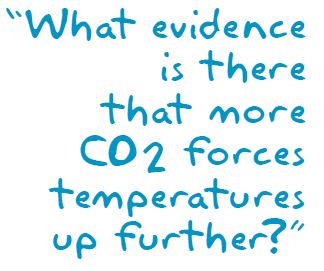I made a decision after my last post on Climategate that I would scale back on my interest in anthropogenic global warming.
Before the emails and documents surfaced, I already knew there were issues with the some of the scientists and their data at East Anglia. Unfortunately, it’s likely that similar issues related to climate change exist in other places.
I am now very satisfied that my doubt in anthropogenic global warming is justified and don’t feel the need to follow what’s happening with climate change quite so closely.
I’ve already stopped my Google alert on the phrase climate change, which has significantly reduced the amount of items that I see in my feed reader.
This is my final post on climate change for the foreseeable future and I’m sharing here just a few of the many things I’ve learned before I get back to my regular posting.
I’m not looking to try to change any one’s mind, just share what I’ve learned. I’ll still be learning as things show up in my feed reader – I just won’t be studying as aggressively .
.
Many scientists and others who are skeptical of anthropogenic global warming would like the answer to one question that, so far, has not been answered:

While there is laboratory evidence that carbon dioxide acts as a greenhouse gas and carbon dioxide and global temperature have both been rising, real world proof that CO2 has caused the rise in global temperature does NOT exist.
While, at times, there appears to be a rough correlation between CO2 and global temperature, correlation does not prove causation.
Even though anthropogenic global warming is an unproven hypothesis, it is likely that some historical warming resulted from carbon dioxide released to the atmosphere by humans. However, because of the physical properties of CO2, it’s done all the warming it can do.
Predictions of rising temperatures and the dire consequences of anthropogenic global warming are based on computer climate models. The climate models include the assumption that global temperatures will rise as CO2 continues to rise.
Over the last decade, global temperatures have leveled off while CO2 continued to rise. Temperature is trending below all of the Intergovernmental Panel on Climate Change (IPCC) predictions.
Joanne Nova, an Australian freelance science presenter & writer: Professional speaker, author, and former TV host, has prepared and published two excellent — and free — booklets on global warming. The first, The Skeptics Handbook, has been translated by volunteers into many other languages, including German, French, Norwegian, Finnish, Swedish, Turkish, Portuguese, Japanese, and Danish.

Carbon dioxide acts as a greenhouse gas by absorbing infrared radiation in three narrow bands of frequencies, (2.7, 4.3 and 15 micrometers (µM)), meaning that most of the heat producing infrared radiation frequencies escapes absorption by CO2. The main peak, 15 µM, is absorbed completely within about 10 meters of the ground meaning that there is no more to absorb. Doubling the human contribution of CO2 would reduce this distance. Reducing the distance for absorption would not result in an increase in temperature.
 The sun appears to have entered a less active period and is providing less warmth to the Earth. The sun is in an extended solar minimum that was predicted to end in March 2008, nearly 20 months ago. Since 2004 there have been 770 days without sunspots. A typical solar minimum averages about 485 days. Solar magnetic activity continues to drop.
The sun appears to have entered a less active period and is providing less warmth to the Earth. The sun is in an extended solar minimum that was predicted to end in March 2008, nearly 20 months ago. Since 2004 there have been 770 days without sunspots. A typical solar minimum averages about 485 days. Solar magnetic activity continues to drop.
A number of scientists are projecting that global warming is over, for now, and that global average temperatures will be dropping for the next 20 to 30 years.

“Tricks” apparently have been performed on more climate data than just the tree ring proxy information. The figure below shows the adjustments made to the historical temperature record of Darwin, Australia. The blue lines show the values for the original, “raw” temperature data. The red lines are the official NOAA/GHCN ( National Oceanic and Atmospheric Administration — Global Historical Climate Network) data after the values have been “homogenized” and averaged. The black line are the values for the adjustment that was made (uses the scale on the right of the figure).
“Before getting homogenized, temperatures in Darwin were falling at 0.7 Celcius per century … but after the homogenization, they were warming at 1.2 Celcius per century. And the adjustment that they made was over two degrees per century …” – Willis Eschenbach, The Smoking Gun At Darwin Zero

American climate sceptics are now demanding a thorough investigation of NASA’s earth science programme, including the possibility that instruments on its satellites have been “tweaked” to give a “correct” result, and pointing out that the agency has repeatedly had to correct its data, going back to the 1930s. The common factor between CRU East Anglia and NASA is the destruction or withholding of research models and data which, if they are reliable, should be their pride and joy – documentation that would secure these institutions’ place in history, like Einstein’s equations. Telegraph.co.uk






